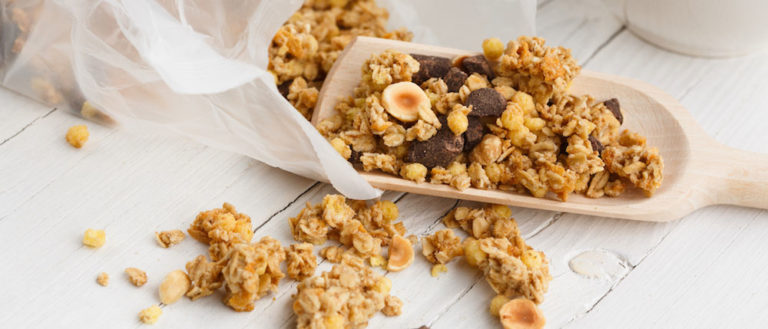Ensuring Optimal Product Quality: Selecting the Right Moisture Barrier Film

As both food industry professionals and consumers, we understand the crucial role of packaging moisture barriers in maintaining food quality. We've all experienced the disappointment of finding soggy crackers or tough dried fruit in our pantries. While consumers might blame themselves for improper packaging closure, food manufacturers must ensure products reach consumers at peak quality. This post explores the importance of selecting appropriate moisture barrier films and provides methods for assessing product and packaging performance.
Shelf Life Testing
Our knowledge and experience help your brand deliver the ideal consumer experience every time. Contact us to learn about our pragmatic solutions for shelf-life testing.
Contact UsUnderstanding Moisture Tolerance
To determine the optimal moisture barrier, we need to define two key moisture levels:
- Production Moisture Range: The moisture content of the product as it leaves the manufacturing facility.
- Storage Moisture Range: The moisture content range within which the product remains acceptable to consumers throughout its shelf life.
Example: A breakfast cereal with raisins might have a production moisture range of 8-9%. However, the flakes might become tough above 10.5% moisture, and the raisins above 6.5-7%. Packaging must maintain moisture within the storage range.
Determining Moisture Range: Shelf life testing is essential. Generating a moisture sorption isotherm at relevant temperatures provides information on texture and moisture as a function of water activity and storage humidity. A simple storage study, exposing packaged product to high and low humidity environments, further refines this understanding. Sensory scores (e.g., Degree of Difference, DOD), initial moisture values, and moisture changes based on package weight provide key insights.
Assessing Package Moisture Barrier
The Water Vapor Transmission Rate (WVTR) specified by film manufacturers is a starting point, but it's not the whole picture. Two caveats exist:
- WVTR as a Maximum: Manufacturers often state a maximum WVTR, meaning the actual average WVTR of their film is likely lower (better).
- Packaging Process Impact: The conversion of film into packaging can significantly affect the final WVTR. A well-controlled process maintains the film's WVTR, while a less-controlled process can drastically reduce it.
To determine the actual WVTR of the finished package, use the same moisture gain study employed for moisture tolerance. This provides the average and range of WVTR for the finished package, ensuring you're getting the barrier protection you paid for.
Predicting Shelf Life Using a Modified Packaging Equation
Once moisture tolerance and package WVTR are known, a modified version of Labuza's packaging equation can predict product performance in various environments. However, this equation assumes the packaging, not the product itself, controls moisture transfer. This is true for products like snack chips in metalized film but not for products like large bags of flour where the product itself limits moisture transfer.
The equation allows you to apply data to various storage environments (using temperature and humidity data from storage recorders or weather services). This helps answer questions such as:
- How will the product perform across different storage environments?
- How will high/low moisture products perform in extreme humidity/dryness?
- How will changing packaging, production moisture, or storage moisture affect quality?
Conclusion
While this approach makes assumptions, it provides valuable estimates for market pull samples or long-term studies. It helps confirm assumptions, understand other quality-affecting mechanisms (rancidity, browning, flavor loss), and make informed business decisions regarding moisture-limited shelf life. Combining this information with an understanding of other shelf-life impacting factors (as discussed in our blog post "Shelf Life: Understanding What Drives Food Deterioration") provides a holistic approach to ensuring optimal product quality.
Let's Get to Work!
Submit your order online and ship your samples today. If you have questions, we are always here to help.
Medallion Labs+
A food testing program designed with mid-market and enterprise food and ingredient manufacturers in mind.
- Labuza et al, Cereal Foods World 46, no. 5 216-219 (May 2001)